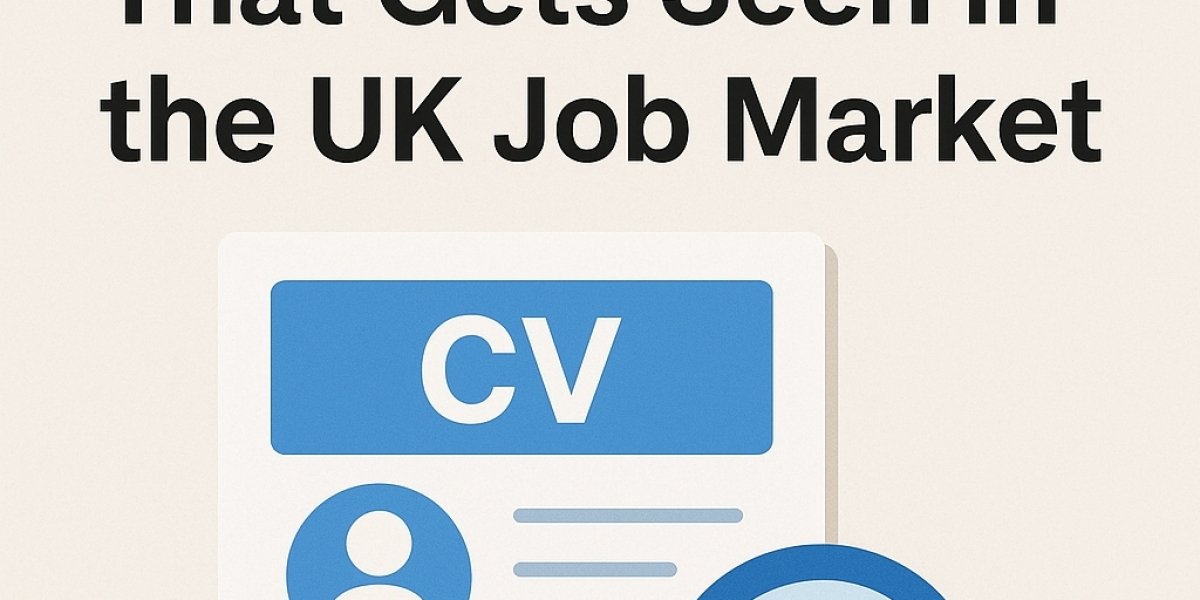In today’s competitive hiring landscape, it’s no longer enough to simply have a well-written CV. With most UK employers using Applicant Tracking Systems (ATS) to manage applications, your CV must be optimized to pass through these digital gatekeepers before a human recruiter ever sees it. Job seekers often spend hours crafting their resumes, only to have them filtered out because of formatting errors, missing keywords, or unsuitable file types. That’s why understanding how to tailor your CV for ATS algorithms — or working with a Professional CV Writing Company In UK that specializes in this — can be the difference between landing an interview and being overlooked.
What Is an ATS and Why Does It Matter?
An Applicant Tracking System is software used by recruiters and HR departments to organize and manage job applications. When you submit a CV, the ATS scans it for specific keywords, experience levels, and qualifications that match the job description. It then ranks or filters candidates based on how well their CV aligns with the role requirements.
In the UK, where hundreds of applicants often apply for a single vacancy, ATS technology helps recruiters streamline the process. However, this also means that if your CV isn’t formatted or worded correctly, even strong candidates can be automatically rejected. An ATS-friendly CV ensures that your skills and achievements are visible to both the software and the recruiter.
1. Use a Clean, Simple Format
Complex formatting can confuse ATS software. Many systems struggle to read tables, graphics, columns, or unconventional fonts. To improve your chances:
· Stick to standard fonts like Arial, Calibri, or Times New Roman (size 10–12).
· Avoid headers, footers, and text boxes.
· Use clear section titles such as Work Experience, Education, Skills, and Certifications.
· Save your CV as a .docx or .pdf file (check the job posting for preferred format).
A clean layout doesn’t just help the ATS — it also makes your CV more readable when it reaches a recruiter’s desk.
2. Optimise for Keywords
Keywords are the lifeblood of ATS scanning. These are the specific words or phrases that describe the skills, tools, and qualifications needed for the job.
Here’s how to find and use them effectively:
· Read the job description carefully and note repeated terms (e.g., project management, Excel proficiency, stakeholder engagement).
· Integrate these keywords naturally into your CV’s experience, summary, and skills sections.
· Use both the long and short forms of terms (for example, “Search Engine Optimization (SEO)”).
Avoid keyword stuffing — the goal is to make your CV readable and relevant, not robotic.
3. Write a Targeted Professional Summary
Your professional summary is the first thing recruiters see, and it’s also one of the first sections scanned by ATS software. Craft a brief, keyword-rich introduction (3–4 lines) that highlights your career achievements and the value you bring.
For example:
“Results-driven Marketing Manager with 8+ years of experience leading digital campaigns for UK-based retail brands. Skilled in SEO, PPC, and brand strategy, with a proven track record of increasing online visibility by 60%.”
This immediately establishes relevance and includes keywords likely to score well in ATS analysis.
4. Use Standard Headings and Chronological Order
ATS systems are programmed to look for familiar headings like Experience, Education, and Skills. Creative headings such as My Career Journey or Where I’ve Worked might seem unique but can confuse the software.
List your experience in reverse chronological order, starting with your most recent role. Include job title, company name, dates of employment, and concise bullet points describing your responsibilities and achievements.
5. Quantify Your Achievements
Numbers make your CV more compelling and measurable — and they also help with keyword optimisation. Instead of saying:
“Responsible for improving team performance,”
say:
“Improved team performance by 25% through strategic training and project coordination.”
Quantifying results not only demonstrates impact but also provides more specific data points that ATS systems can detect.
6. Include Relevant Skills and Tools
Most ATS systems have a dedicated section that scans for Skills. Use this to highlight both hard and soft skills that align with the job posting. For example:
Hard skills: Data analysis, project management, Microsoft Excel, CRM systems
Soft skills: Communication, leadership, adaptability, time management
If you’re in a technical field, list relevant tools and software — for instance, Python, AutoCAD, or Adobe Creative Suite. This helps the ATS identify you as a strong technical match.
7. Avoid Unreadable Elements
ATS software can’t read images, charts, or icons. That means any information contained within these design elements will be ignored. Similarly, avoid:
· Using unusual bullet symbols (stick with standard circles or dashes).
· Embedding links as graphics.
· Saving your CV as a scanned image.
Keep it text-based and straightforward.
8. Tailor Your CV for Each Job Application
One of the biggest mistakes job seekers make is sending the same CV to every employer. Each company’s ATS algorithm will prioritise different keywords depending on the role description. Tailor your CV for every application by mirroring the specific language used in each job advert.
For instance, if one employer asks for “project coordination” and another for “project management,” include both where relevant. This small step can significantly increase your chances of being shortlisted.
9. Test Your CV Before Sending
To ensure your CV is truly ATS-compatible, run it through an online ATS CV checker or upload it to a job portal to see how the system parses your information. Look for misaligned sections or missing details.
If the formatting or text looks off, revise it before applying. Professional CV writing services often use these tools to guarantee that every document they produce is optimised for both machines and humans.
10. Seek Expert Help When Needed
Creating a CV that’s both visually appealing and ATS-friendly can be tricky. If you’re struggling to find the right balance, consider partnering with a professional CV writer. They understand UK hiring trends, recruiter preferences, and the nuances of different ATS systems.
A professional CV writing company in the UK can ensure that your CV meets all technical and strategic requirements — giving you an edge in a competitive market.
Final Thoughts
An ATS-friendly CV isn’t about tricking technology — it’s about aligning your experience with the language and structure that hiring systems understand. By focusing on clear formatting, relevant keywords, and measurable results, you can make sure your CV not only passes through the digital filters but also impresses recruiters once it does.
In the modern UK job market, your first audience is often a machine — but your goal remains the same: to tell your professional story in a way that gets you seen, remembered, and hired.
Read More...








